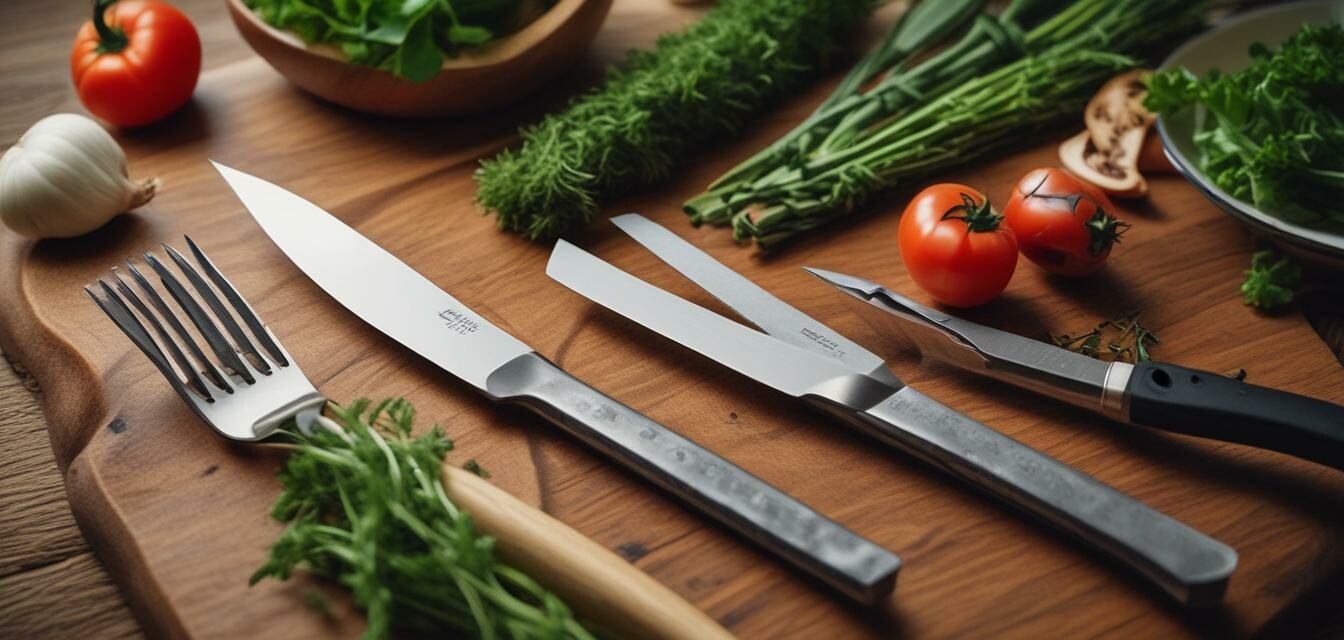
Essential cutlery for every home chef
Key Takeaways
- Quality cutlery is crucial for efficient meal preparation.
- Different knives serve different culinary purposes.
- Investing in essential kitchen tools can enhance your cooking experience.
- Understanding basic knife care extends the lifespan of your tools.
- Properly organized cutlery improves kitchen efficiency.
Whether you're a novice in the kitchen or a seasoned chef, having the right cutlery can make a world of difference in your culinary adventures. In this guide, we delve into must-have cutlery options, offering insights into knives and utensils that are ideal for every cooking style.
Why cutlery is essential for every home chef
Cutlery is more than just a tool; it defines the way you prepare your meals. A well-equipped kitchen with quality cutlery enables you to tackle any recipe with confidence and ease. Understanding various types of knives and utensils ensures that you will always have the right tool for the job.
Types of essential cutlery
Here’s a table that summarizes some of the essential types of cutlery every home chef should consider:
| Cutlery Type | Purpose |
|---|---|
| Chef's Knife | All-purpose knife for chopping, slicing, and dicing. |
| Paring Knife | Perfect for peeling and intricate cutting tasks. |
| Serrated Knife | Best for slicing bread and delicate foods without squashing. |
| Fillet Knife | Great for boning and filleting fish. |
| Utility Knife | Versatile for a variety of kitchen tasks. |
Choosing the right knives
When selecting the best cutlery for your culinary needs, consider the following factors:
- Material: High-carbon stainless steel is durable and maintains sharpness.
- Weight: A comfortable weight is essential; too heavy or too light can hinder control.
- Handle: Choose ergonomic handles for a secure grip, enhancing your chopping precision.
Knife care and maintenance
Proper care and maintenance of your cutlery ensure longevity. Here’s how to take good care of your knives:
- Always hand wash your knives and dry them immediately.
- Regularly sharpen your knives to maintain their cutting edge.
- Store knives in a knife block or magnet strip to protect the blades.
Essential utensils for the kitchen
In addition to knives, having a variety of kitchen utensils can improve your cooking efficiency. Here's a brief overview:
| Utensil | Use |
|---|---|
| Wooden Spoon | Ideal for stirring sauces and mixing batter. |
| Spatula | For flipping, scraping, and serving food. |
| Whisk | Perfect for beating eggs and mixing ingredients. |
| Peeler | Useful for peeling fruits and vegetables. |
Organizing your cutlery
A well-organized kitchen is essential for efficiency. Here are some tips on how to organize your cutlery:
- Use drawer dividers to separate different types of knives and utensils.
- A magnetic strip on the wall can store knives while saving drawer space.
- Keep frequently used items at the front of the drawer for easy access.
Enhancing your cooking experience
Investing in quality cutlery and utensils tailored to your cooking style can significantly enhance your overall experience in the kitchen. To further explore the tools you may need, consider checking out our other category pages:
- Cookware sets to complement your cutlery.
- Explore baking essentials for desserts.
- Specialty ingredients to expand your culinary options.
- Visit our cooking tips & techniques for additional resources.
Conclusion
In the kitchen, cutlery plays a vital role in the cooking process. Whether you are slicing vegetables or preparing a gourmet meal, having the right tools can make your cooking experience effortless and enjoyable. As you invest in essential cutlery, remember to also consider proper care and organization techniques to enhance your kitchen efficiency.
Pros
- Quality cutlery improves food preparation.
- Variety of knives meets diverse cooking tasks.
- Proper maintenance extends knife lifespan.
Cons
- Initial investment for quality cutlery can be high.
- Requires proper care and maintenance.